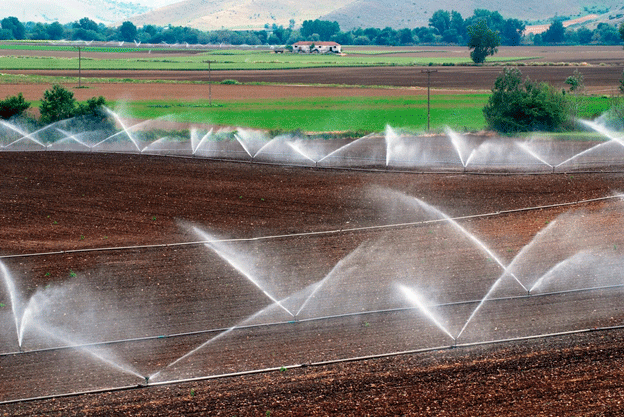In the face of changing climate patterns, water scarcity, and rising costs, U.S. farmers and agronomists are reevaluating how they manage water resources. The USDA’s National Agricultural Statistics Service (NASS) has published its 2023 Irrigation and Water Management Survey, which reveals important trends in water use, technology adoption, and efficiency improvements across American farms.
Decrease in Irrigated Acreage and Water Usage
In 2023, the survey identified 212,714 farms with 53.1 million irrigated acres across the U.S., a decrease from 231,474 farms with 55.9 million irrigated acres in 2018. This reduction in irrigated acreage corresponds with a 2.8% drop in water usage, with farms applying 81 million acre-feet of water in 2023, compared to 83.4 million acre-feet in 2018. The average water applied per acre remains at 1.5 acre-feet, indicating that while the area under irrigation has decreased, per-acre water efficiency has held steady.
These shifts are largely due to farmers adapting to prolonged drought conditions, particularly in the western U.S., where water scarcity has significantly impacted agriculture. Strategies include reducing the amount of irrigated land and employing more efficient irrigation technologies to maximize productivity with less water.
Regional and Crop-Specific Data
Five states—Arkansas, California, Idaho, Nebraska, and Texas—represent nearly half of the irrigated acres in the U.S. and account for more than half of all water used. These states are home to large-scale operations in grain, oilseed, vegetable, and hay crops, which rely heavily on water to meet demand. Notably, California and Idaho continue to face pressure from drought, which has led to state policies encouraging water conservation in agriculture.
In terms of crop type, the largest share of irrigated farmland is dedicated to cropland used for grains, oilseeds, vegetables, and nursery crops. Farmers irrigated 49.6 million acres of harvested cropland in the open in 2023, underscoring the importance of these crops in the U.S. food system.
Shift to Advanced Irrigation Technology
One of the most significant findings from the 2023 survey is the rise in sprinkler irrigation over traditional gravity irrigation, with 12.6 million more acres irrigated by sprinklers. This shift reflects an industry-wide move toward more efficient water application methods. Sprinkler systems, including center-pivot and drip irrigation, offer better control over water distribution and can reduce runoff, a critical benefit in arid regions where every drop counts.
The data also shows that ground water, sourced from on-farm wells, remains the main source of irrigation water, accounting for 54% of the total water used. The average well depth is now 241 feet, emphasizing the growing need for deeper wells as groundwater levels decline in many agricultural regions.
Investment in Irrigation Infrastructure and Technology
In 2023, farmers spent approximately $3 billion on irrigation equipment, land improvements, and advanced technologies, with an additional $3.3 billion going toward energy costs for water pumping. This level of investment highlights the growing importance of technology in irrigation. From automated irrigation systems that minimize water waste to advanced computer technologies that track soil moisture, these tools help farmers optimize water use, conserve energy, and increase crop yields despite environmental constraints.
Irrigated Horticulture on the Rise
Horticulture under protection—such as in greenhouses and controlled environments—also saw growth, with 1.7 billion square feet under irrigation in 2023, compared to 1.5 billion square feet in 2018. This expansion reflects a broader trend toward protected agriculture, which conserves water by limiting evaporation and offers better control over irrigation inputs. Open-field horticulture also grew, covering 598,980 acres, up from 581,936 acres in 2018.
The 2023 Irrigation and Water Management Survey offers valuable insights for farmers, policymakers, and agricultural businesses. The data underscores the critical role of advanced irrigation technology and efficient water management practices in responding to water scarcity and climate pressures. By investing in new systems, reducing irrigated acreage, and prioritizing high-efficiency methods like sprinkler and drip irrigation, U.S. farmers are taking proactive steps to ensure sustainable water use in agriculture. These strategies will be essential in maintaining productivity and protecting water resources in the years ahead.

